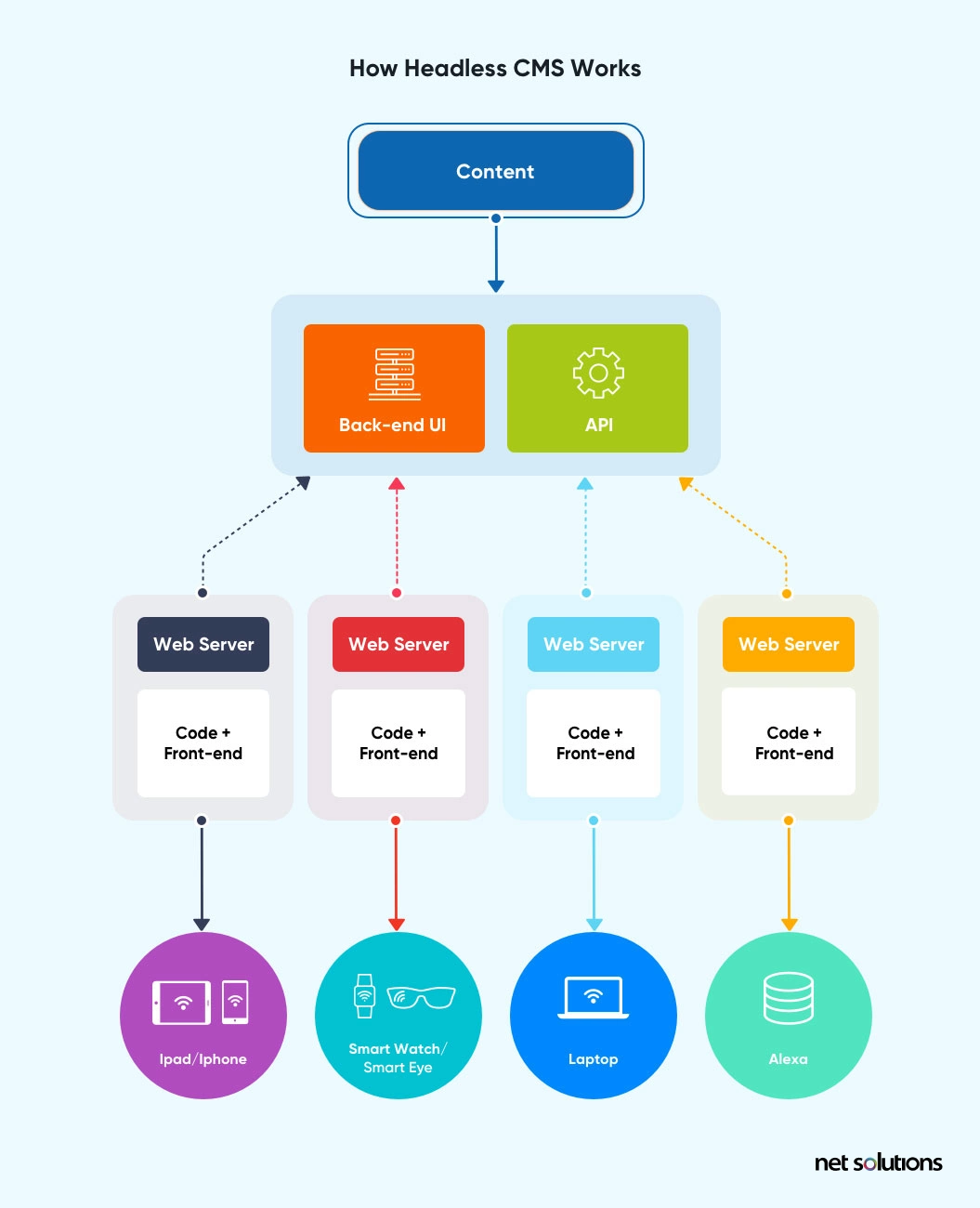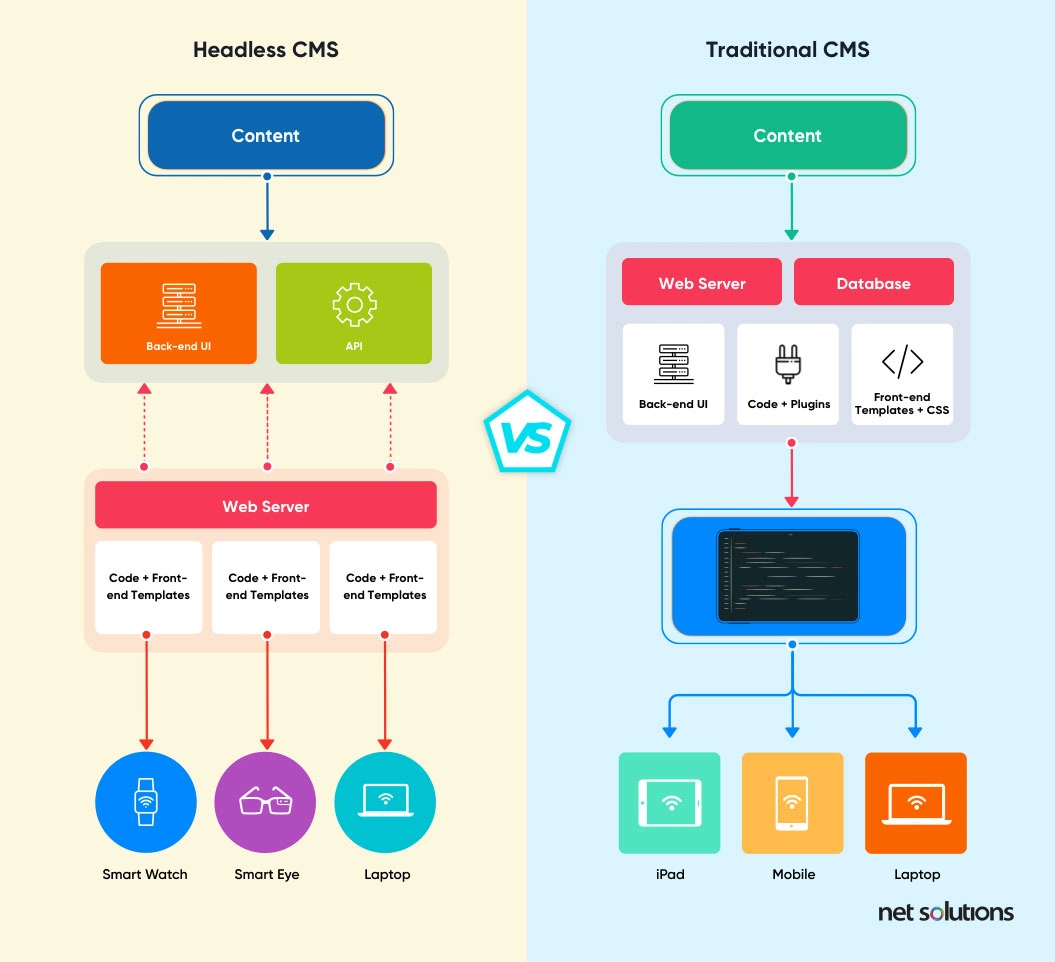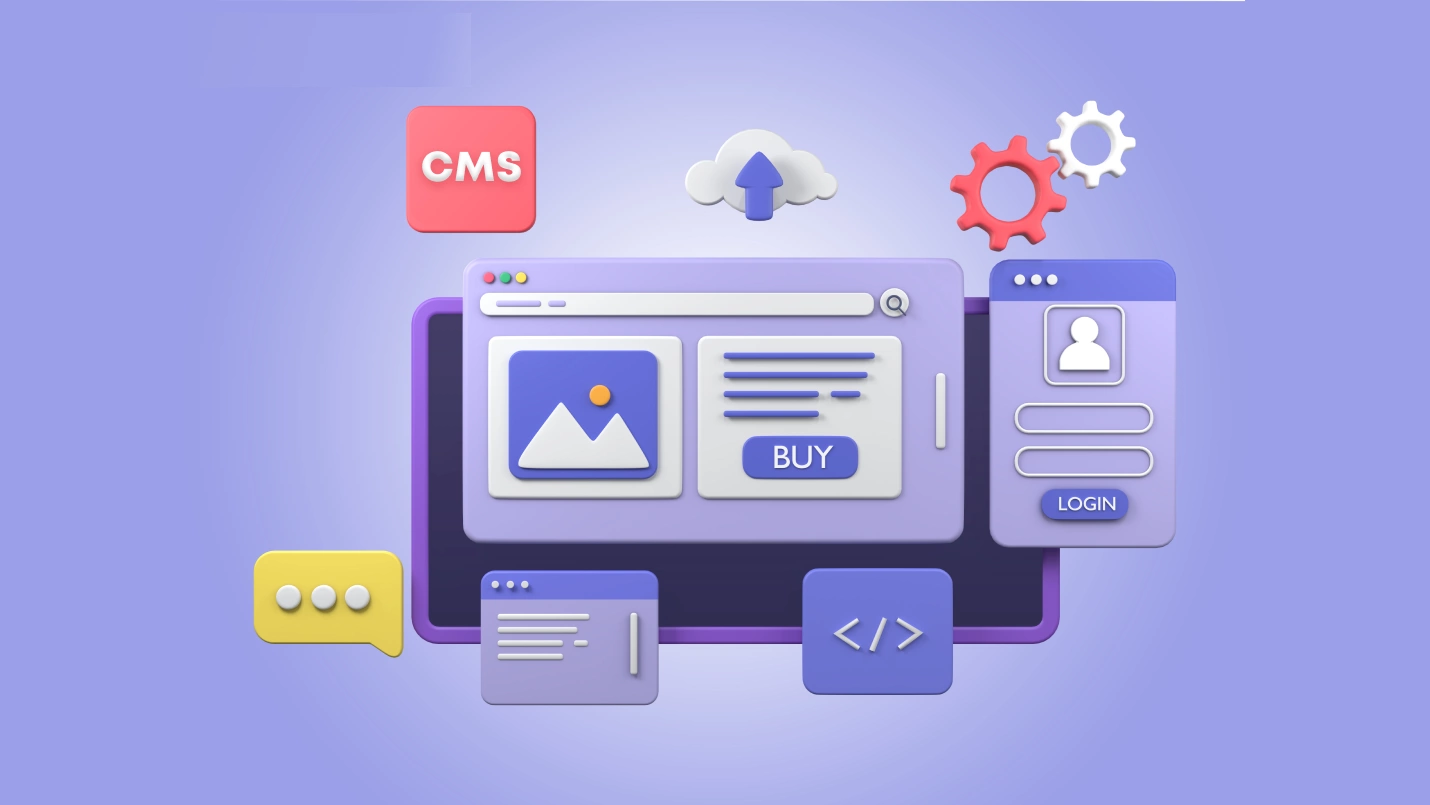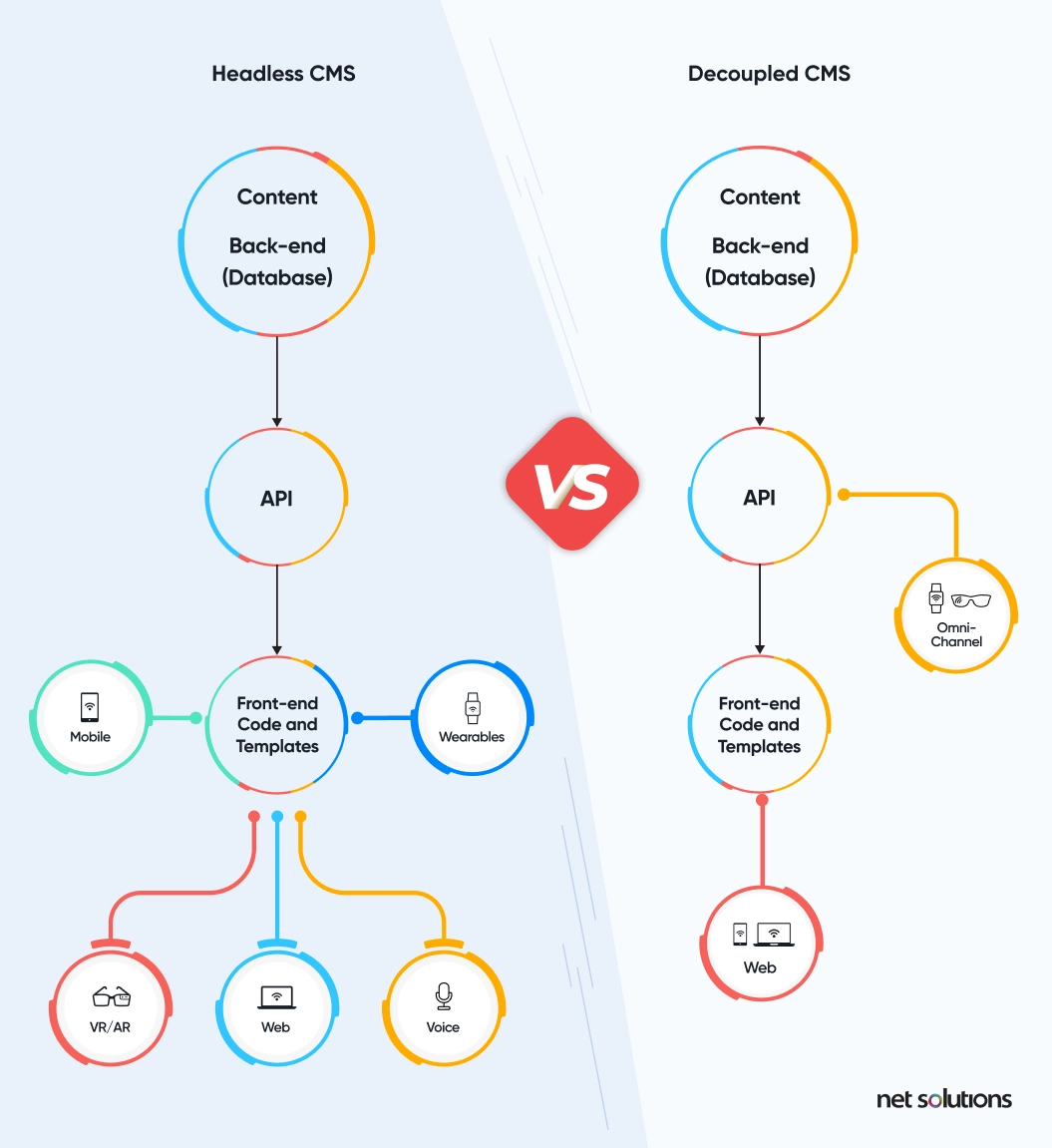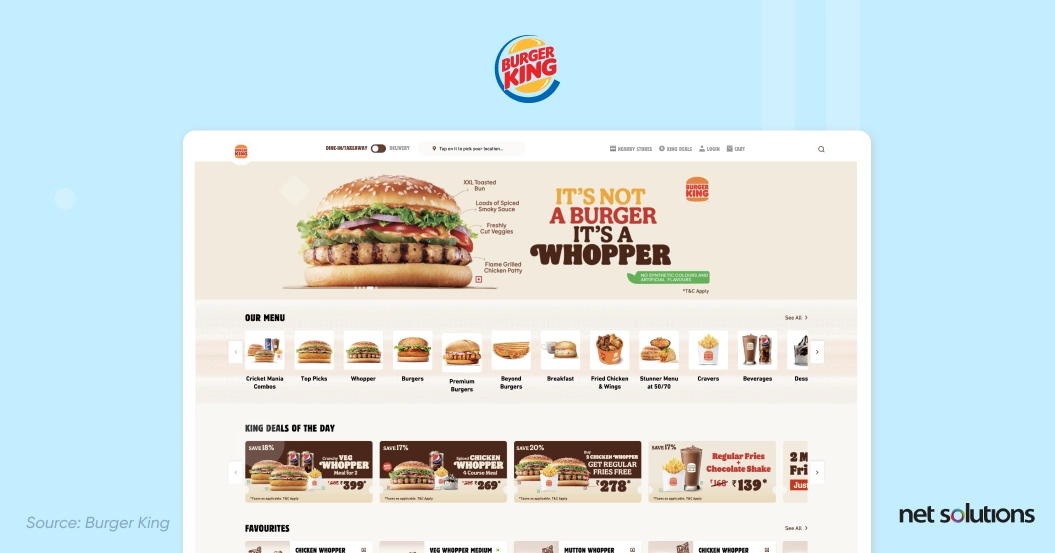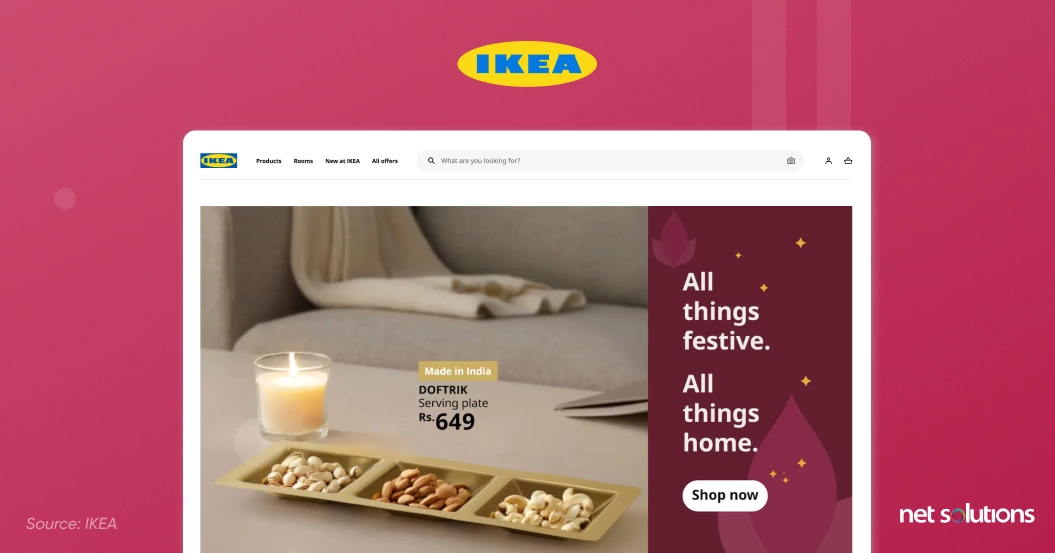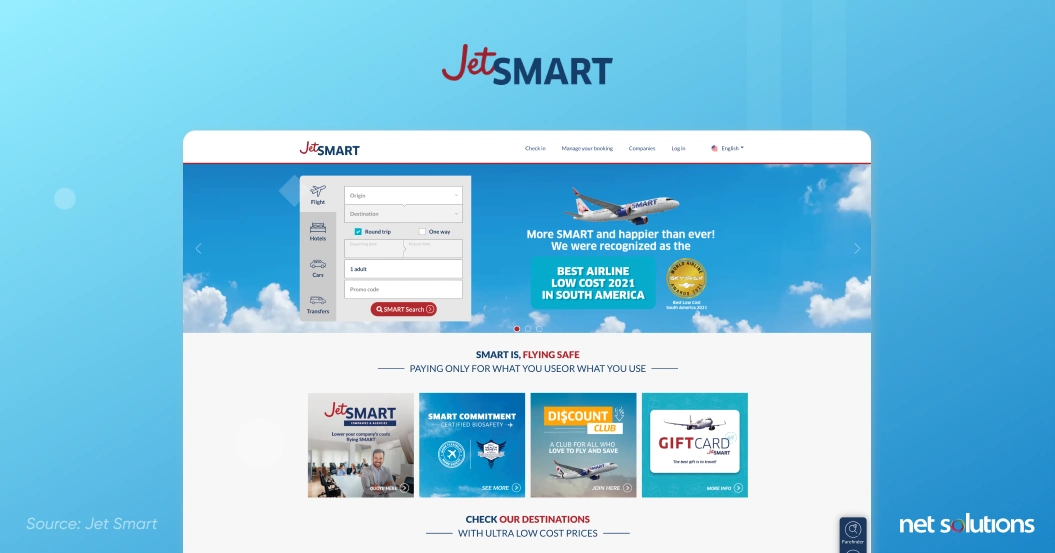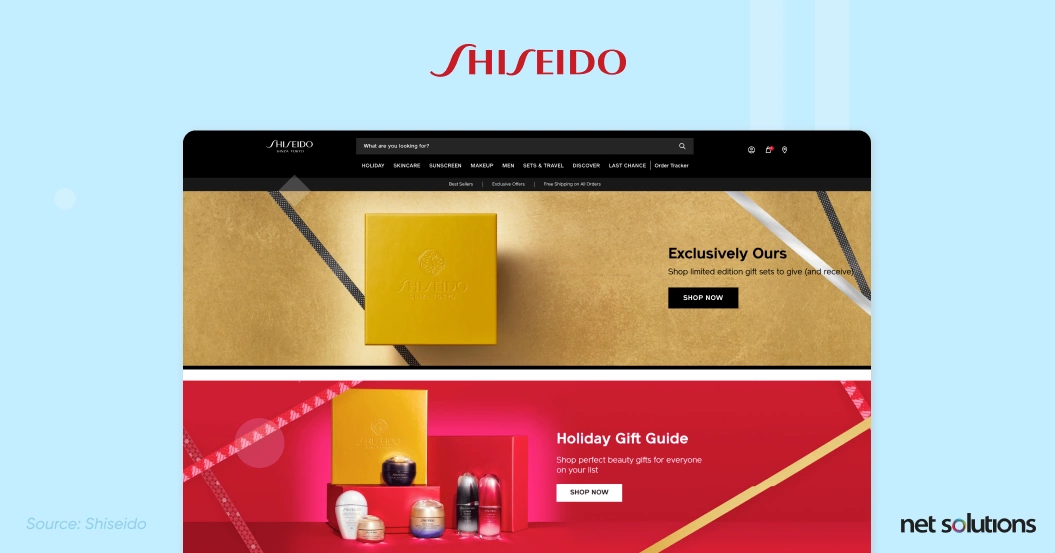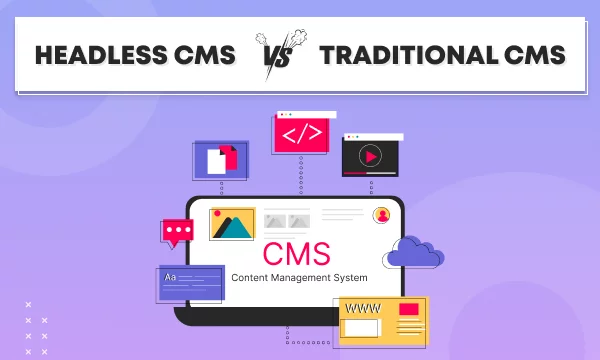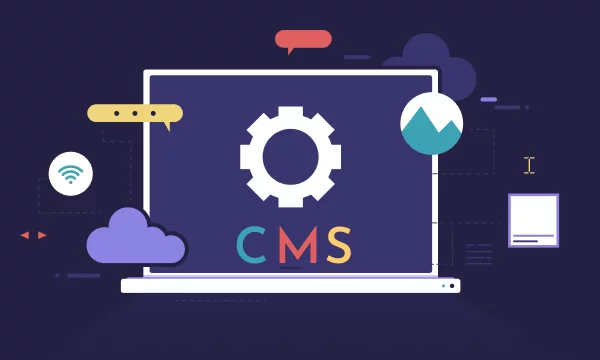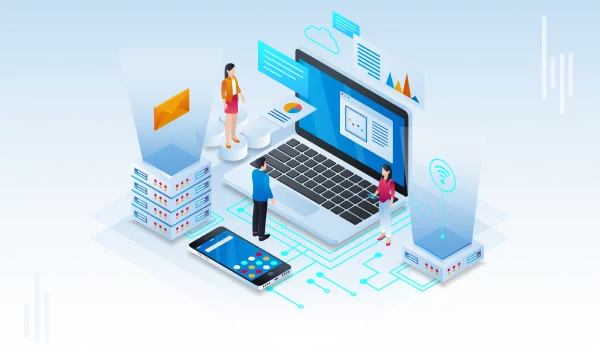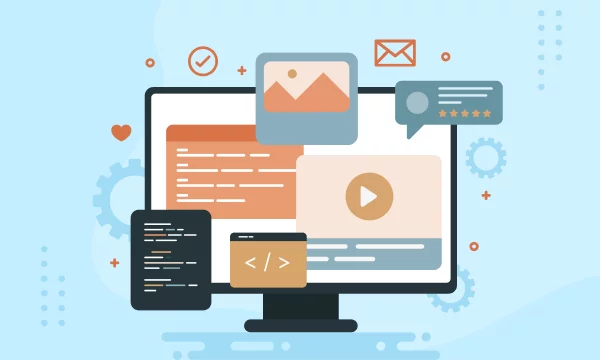The traditional Content Management System (CMS) structure has been the go-to for web development for long. However, with the rise of business requirements, intensified user demands, and an increasing number of digital platforms and devices, there was a dire need for adaptable solutions. Digital needed to go beyond conventional CMS. That’s when the headless CMS came into the picture.
This blog will explore headless CMS and walk you through several real-life headless CMS examples, use cases, and best headless CMS implementation practices. Let’s begin!
What is a Headless CMS?
A headless CMS is a type of content management system that decouples the content repository (backend) from the presentation layer (the “head”), making it possible to pull unformatted content and deliver it to a variety of channels or platforms.
Features of a Headless CMS
- API-first Architecture: Headless CMS operates on the API-first architecture, i.e., the content is stored in a separate database, and you can access it by any application or device through an API. This way, you can easily integrate a headless CMS into your website, mobile app, or eCommerce platform.
- Custom Content Models: You can create custom content models to define the structure and fields of your content in a headless CMS. It allows you to store and manage your content how you want.
- Version Control: Headless CMS offers the version control feature to track changes to the content and revert to previous versions if required.
- Workflows: Headless CMS also features workflows to implement content creation, review, and publishing processes.
- Security: Headless CMS also offers security features like encryption and role-based access control to protect your content.
Besides these features, Headless CMSs allow you to:
- Manage content for multiple websites and platforms from a single platform.
- Localize your content for different languages.
- Personalize content based on individual requirements.
Why Do You Need a Headless CMS?
A headless CMS is endlessly customizable and scalable. It can help you stay ahead of the competition by responding to shifting opportunities.
Here are a few other reasons you need a headless CMS:
- A headless CMS is Front-end agnostic, which means you can efficiently deliver content to different channels or platforms via APIs.
- You can simultaneously push any edits to the content out to all channels and platforms, speeding up updates.
- You can easily expand channels without increasing the workload since the channels and platforms are decoupled from the content repository.
- You can use any language or framework instead of limiting yourself by the bounds of the legacy CMS. Also, you can easily upgrade the system or make changes in the presentation layer without impacting the creation of new content.
- A traditional CMS may not respond well to increases in traffic, particularly if the solution is in-house, with scaling often limited to the database size. However, scaling is not an issue with the headless CMS. You can easily adjust it to increase traffic.
- A single plugin, theme, or extension vulnerability can replace a traditional CMS. However, since the headless CMS is based on microservices architecture, the vulnerability in any function wouldn’t impact the whole CMS.
- A headless CMS is technology-agnostic, which means you can easily adapt to new technologies or connect to new platforms and channels as they emerge.
Headless CMS Architecture
A headless content management system (CMS) comprises three main components: front-end applications, a content repository, and APIs.
- Front-end applications are responsible for displaying content to users. They’re independent from the headless CMS; you can build them in any technology or framework. These front-end applications can be anything from a simple text editor to an eCommerce platform.
- Content Repository is where you organize, manage, and store all the content. A content repository can be a cloud-based storage, file system, or database.
- Application programming interfaces (APIs) let you access, store, and retrieve content from the content repository. The type of APIs offered in a headless CMS may vary from platform to platform. Some headless CMSs offer customizable GraphQL or RESTful APIs for high-performance reads and CRUD APIs (Create, Read, Update, and Delete) for content creation. Other headless CMSs offer read APIs only that need a built-in content editor and admin UI for content creation and management.
This image describes how a headless CMS works:
Headless CMS vs Decoupled CMS vs Traditional CMS: What’s the Difference?
Let’s compare the headless CMS, decoupled CMS, and the traditional CMS to understand how they’re different from each other.
Difference between a headless CMS and a traditional CMS
The absence of the front-end layer called Head is the primary difference between the headless and traditional CMS. While this may give you a surface-level overview, differences become clearer as you dig further. Let’s learn about some such differences:
| Technology stack | Coupled with the CMS, all-in-one | Independent of CMS, microservices-based |
| Supported devices | Limited | No limits |
| Content | Optimized for websites, style information connected to the content | Raw, a building block for whatever is needed |
| Hosting | In-house or cloud | Cloud |
| Scalability | Limited by stack, high development time | Fast, supported by microservices |
| Performance | Slow | Optimized |
| API approach | APIs attached with plugins or extensions | API-first |
| Maintenance | New features or upgrades impact the entire website, its performance, and the ability to create new content. | Site performance and content creation are unaffected by development upgrades. |
The difference between a headless CMS and a decoupled CMS
The concept of a decoupled CMS falls between a traditional CMS and a headless CMS. As its name suggests, a decoupled CMS separates the presentation layer from the back-end.
However, the front-end is still a part of the CMS – another choice to make, code, and optimize. While the style of the content is not stored with the content (as with the traditional approach), it is immediately limited by the front-end chosen.
While many traditional CMS solutions claim to be headless, beware that many are only decoupled. Only a headless CMS solution allows content to remain distinct from where content will go or the microservices architecture that will support it.
| Technology stack | Generally monolithic; largely dependent on a specific technology stack for frontend and backend. | More flexible; allows for using various technology stacks for frontend development while having a separate backend technology stack. |
| Supported devices | Limited to the devices the CMS natively supports. | Supports many devices, including web, mobile, and IoT devices. |
| Scalability | is often limited due to monolithic architecture. | Higher scalability: The front-end and back-end can be scaled independently. |
| Content | Content and presentation are tightly linked, limiting the reusability of content across various platforms. | Content is separated from the presentation layer, facilitating reusability across different platforms and devices. |
| Hosting | Usually requires a single hosting solution for both the front and back-end. | Allows separate hosting solutions for front and back-end, offering more flexibility and security options. |
| Performance | Might face performance issues as the front-end and back-end are closely intertwined, affecting each other’s performance. | Generally offers better performance as the frontend and backend are separate, avoiding bottlenecks and facilitating optimizations. |
| API approach | Limited API capabilities, not designed with an API-first approach, which might restrict integrations and extensions. | The API-first approach enables easy integrations and facilitates content delivery to various platforms through APIs. |
| Maintenance | Maintenance can be more cumbersome as changes in one part can affect the entire system. | Simplified maintenance allows for independent updates and changes to the front-end and back-end without affecting each other. |
Headless CMS Use Cases
Here are a few situations in which you can use headless CMS:
1. Delivering content across multiple channels
Amidst technological advances, changes in consumer expectations, and cut-throat competition, companies are looking to reach consumers where they are. They want to engage and convert mobile apps, websites, social media, or wearable devices at each touchpoint.
Headless CMS lets you seamlessly deliver content to whichever platform you want (mobile app, website, social media, smartwatches, voice assistant) with APIs, thus helping in omnichannel content distribution.
Example: One of our clients, the largest distributor, importer, and wholesaler of confectionery products in the UK had a problem in managing its content across its website and mobile applications.To solve it, we used the Hygraph CMS to cater content on these platforms. This gave them the flexibility to seamlessly update and manage their content across both channels.
2. Ensuring adaptability through an API-first approach
Developers build applications to use an API to communicate with other applications in the API-first approach. The idea is to make the app adaptable to evolving business needs and new channels and media coming into the picture.
Headless CMS prioritizes the API-first approach, utilizing APIs for content management, delivery, and integration. It gives you the flexibility to update and deliver content across channels easily.
Example: We use the Contentful CMS to help one of our clients, a leading confectionery wholesaler in the UK, seamlessly update and deliver content on their website using APIs. As a result, updating and managing content has become much easier for them.
As Contentful partners, we can build experiences that engage, convert, and achieve results. Contact us if you have a project in mind.
3. Managing content on multiple platforms globally
Seamlessly managing and delivering content across multiple regions and platforms is a big challenge among businesses. It’s because:
- They have to translate their content into various languages, which is time-consuming and inefficient as sometimes conversation gets lost in translation.
- They have to comply with different data privacy and security regulations.
- They have to ensure uniformity across each platform and channel.
A headless CMS helps you deliver content in multiple languages and across various devices and platforms. You can even integrate the CMS with a compliance management platform to ensure it complies with all regulations.
Example: A prominent real-life example of a brand using a headless CMS to deliver exception total experiences is Starbucks. They use the Kentico CMS to manage content in one place and deliver across multiple channels.
4. Delivering an exceptional total experience
Modern businesses aren’t just focusing on customer experience these days. Instead, they’re following a more inclusive strategy called total experience that integrates customer experience, employee experience, and experience across multiple touchpoints to accelerate business growth. The idea is to enhance customer and employee satisfaction and loyalty by connecting them through shared business moments.
Since a headless CMS is front-end agnostic, you can easily deliver content across multiple platforms, including a website, mobile app, or wearable device. Also, you can build custom front-ends without worrying if the backend would support them. It would help you deliver seamless, consistent, and personalized cross-platform experiences that engage them at each touchpoint.
Example: Nike uses the Sanity headless CMS to deliver consistent and personalized customer experiences across all channels. Customers can browse and order a product on its website or social media platforms and continue receiving notifications about its delivery on mobile apps and wearables.
Nike even delivers personalized product recommendations based on their purchase history, irrespective of the channel they bought the product from. This way, Nike offers customers a seamless and personalized experience across all touchpoints, thus increasing customer satisfaction and driving business growth.
Case Studies of Successful Headless CMS Implementation
1. Burger King used a headless CMS to update & manage its digital menu boards seamlessly
Seamlessly managing and updating content was one of the biggest challenges for Burger King when they launched digital menu boards in over 6,500 stores across the US.
To overcome this problem and keep all the digital boards updated, they use the Core dna headless CMS. It lets them seamlessly update menu items & pricing in real-time while advertising new deals and promotions. This way, they quickly capture diners’ attention and offer them an engaging dining experience.
2. IKEA uses headless CMS to drive innovation from a common content base
IKEA has launched an augmented reality (AR) catalog mobile app that allows users to test products in real-time, offering realistic 3D products overlaid into people’s homes and offices. The furniture brand makes it possible through Core dna’s headless CMS, which leverages APIs to deliver AR and VR experiences to customers. It allows IKEA to drive innovation from a common content base.
3. JetSmart Airlines used headless CMS to deliver localized content
JetSmart Airlines was undergoing a rapid expansion stage throughout South American countries, which presented new challenges for delivering localized content. They leveraged Kontent by Kentico CMS to resolve this issue, which comes with regional content repositories accessible through a streamlined interface. As a result, JetSmart Airlines could allowed them to accelerate the process of translating content for new audiences.
4. Shiseido reduced costs by 50% with a headless CMS
Shiseido Professional has been delivering beauty worldwide since 1872 but has faced common challenges managing content across various digital properties. The company reduced its costs by 50% after moving to the Contentful headless CMS. Also, the process that took months to complete could only be handled in a few minutes.
Future of Headless CMS
The popularity of the headless CMS trend has been on the rise for the past few years. Even in the future, the headless CMS will witness significant growth. According to Future Marketing Insights, the headless CMS market is anticipated to grow to $5,528 Million by 2032 at a CAGR of 22.1% from 2022-32.
Here’s what else we can expect to see in the future:
- The demand for personalized content experiences would rise. To cater to these requirements and stay competitive, businesses need a headless CMS that is more scalable, agile, and flexible than traditional content management systems.
- We’ll see new vendors offering headless content management systems exclusively. Even traditional CMS providers would offer their own headless CMS versions.
- More AI and machine learning-powered features would emerge in headless CMS. Also, we would get to see more integrations between headless CMS and technologies like AI, ML, and marketing automation platforms. This way, you can create more personalized and engaging experiences for customers.
Grow Your Business with the Right Headless CMS with Net Solutions
Net Solutions has years of experience working with advanced headless CMS and digital experience platforms. We have helped many brands fuel their websites, apps, and portals with headless CMS solutions like Contentful, Hygraph, Acquia, and BigCommerce.
Contact us if you don’t know which headless CMS is right for your business. We would help you choose the CMS solution that prioritizes your businesses requirements and deliver experiences that meet user expectations.
Frequently Asked Questions
1. Is a headless CMS only beneficial for enterprises?
No! Startups and small businesses can also benefit from a headless CMS. They can use its flexible nature to leverage their choice’s frontend frameworks and technologies to build prototypes and digital experiences rapidly.
2. Can I integrate my existing website with a headless CMS?
You can integrate a headless CMS with your existing website and efficiently manage and deliver content without a full redesign.
3. What are some of the most popular headless CMS?
Strapi, CoreDNA, Contentful, Hygraph, and Drupal are some of the most popular headless CMS in the market.
4. How to choose the right headless CMS?
To choose the right headless CMS, ask yourself the following questions during the search:
- Is your CMS truly headless or just decoupled?
- Is the CMS self-hosted or hosted?
- What security and compliance considerations are there?
- What pricing tiers are there to support (affordable) scalability?
- Does it support bulk or API content migration (often more flexible)?
5. Why do you need a headless CMS to get personalization right?
More than creating highly customized content for different segments is required. To ace the competition, you must create high-quality content with the right digital experience company, which you can reuse for multiple segments at the right time. A headless CMS gets personalization right by allowing you to connect with multiple channels to deliver content and manage your omnichannel experiences.


